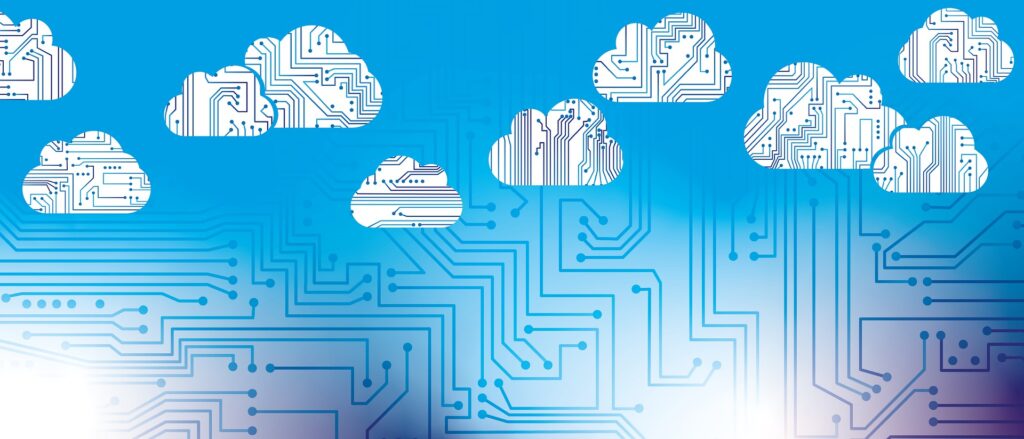Digital security has become one of the most important and vulnerable aspects of many modern businesses. In 2022, the average cost of a data breach reached a record high of $4.35 million, affecting industries from education and healthcare to call centers and finance. Companies and organizations today have to prepare and protect against the threat of malware, ransomware, and phishing attacks, often requiring constant diligence and reminders to employees to be vigilant about practicing safe digital behavior.
In response to this trend, many institutions are moving away from using fully featured PCs or laptops and are instead choosing cloud computing solutions that greatly enhance data security by restricting potential avenues of digital intrusion. Instead of every employee’s laptop or PC individually storing company files and information, cloud computing moves all data storage and processing to a secure, centralized server, making it much more difficult for bad actors to gain access to sensitive data. The endpoint devices essentially serve as controllers to access the central server, with the device’s display showing a live “image” delivered by the server without any data actually being sent to the device. Software updates are also improved, as they are performed at the server level and require no action or delay from users.
Companies that rely on flexible staffing are realizing major gains in productivity and adaptability through cloud computing, enabling secure remote work and rapid onboarding thanks to device uniformity. Cloud-based systems also provide a universal interface, so any user can log in from any connected device or sit down at any in-office workstation without skipping a beat. Notably, some of the companies manufacturing cloud computing servers and endpoints have decided to utilize Linux-based operating systems that offer higher inherent security than Windows-based networks, providing a full range of options for IT buyers and decision-makers.
Cloud solutions aren’t all equal, however, with some requiring specific hardware and others providing compatibility with any brand of third-party endpoint, including thin clients, zero clients, and all-in-one desktop PCs. Depending on what devices are already in use at a company, varying cloud solutions and services may involve significantly different costs, setup requirements, and endpoint needs. In healthcare, for instance, the growth of telehealth services has created a need for more computers to have an integrated camera, microphone, and speakers. This can be critical for hospitals and providers to maintain relevance and provide the best available care to all patients.
The booming popularity of cloud computing has also led manufacturers and solutions providers to launch a new hardware and software option for companies: device as a service, or DaaS. Similar to the highly successful software as a service (SaaS) business model, organizations can now rent or lease hardware and software solutions with a much greater ability to upgrade, replace, expand, or contract their total computing network. Depending on the hardware and software partners, companies can enjoy rapid replacement of equipment, attentive customer service, simple processes for upgrading to newer endpoints, and improved budget management.
Specific industries, such as healthcare, may benefit from choosing specific hardware suppliers that can address a wide range of computing and display needs, from standard laptops and PCs to specialized models that offer additional features, such as RFID readers for employee logins.
Simplifying adoption even further, some hardware and software makers have partnered to provide turnkey solutions that can be implemented quickly and efficiently with full compatibility. This can ease the burden on internal IT staff and enable faster organization-wide rollouts. Cloud-based solutions can also greatly reduce the total need for device maintenance and repair because the endpoints have fewer moving parts than comparable non-cloud laptops or PCs. Users are also likely to notice battery life improvement on mobile endpoints, thanks to the central server handling all processing.
Perhaps the greatest benefit of cloud computing for users is that, instead of people following data stored on devices, the data can now follow the individual. There’s no need to use flash drives or stick to a specific workstation since users can log in on any connected device and enjoy an identical interface.
For organizations that place a priority on data security, cloud computing is currently one of the more secure options available because it expressly limits access to servers and simplifies management by eliminating endpoints as possible intrusion points. Whether it’s for a call center onboarding new remote workers, a financial institution protecting critical customer data, or a hospital expanding its telehealth capabilities, the advantages of cloud solutions are rapidly sweeping the business world, improving security, flexibility, and the cost-effective use of technology.



